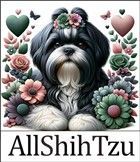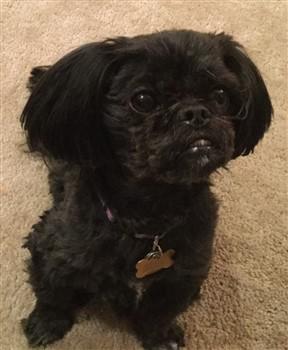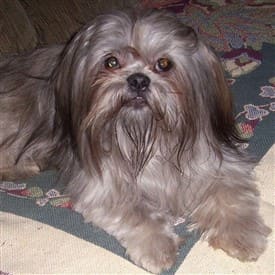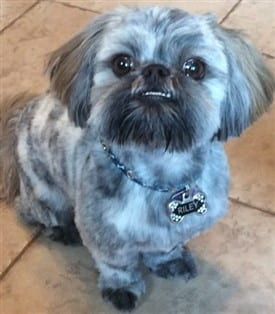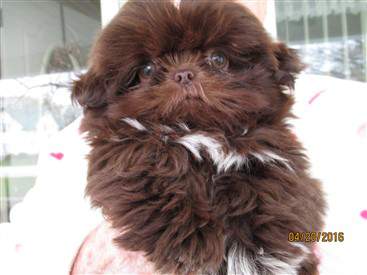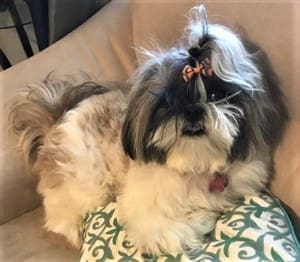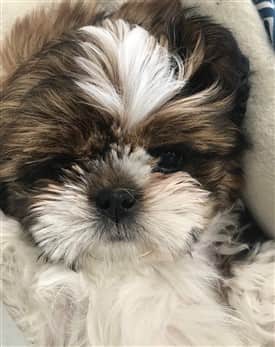Shih Tzu Colors
Overview
In This Article:
List of AKC Recognized Colors (and corresponding color codes)
List of AKC Recognized Colors of the Shih Tzu Breed
Overviews and Examples of Shih Tzu Colors
Read more about Black Shih Tzu Color and see some adorable photos.
Read more about Brindle Shih Tzu Color information, and see some cute photos.
Read more about White Shih Tzu Color information, and see some cute photos.
Read more about Liver and Lavender Shih Tzu Color information, and see some cute photos.
There are several pretty double-colors with the Shih Tzu breed and all official ones have white as one of the colors.
White can be paired with black (seen above) and the classic combo of black and white is one of the most commonly seen. White can also be paired with red, silver, gold, blue (which as we covered is a skin pigmentation so the color seen in the coat will be a diluted color), liver (which as we covered is also a skin pigmentation so the color seen in the coat will be a diluted brown ranging from light to dark), or brindle (which as covered is a pattern of stripes). So, there are lots of variations with double colored Shih Tzu and every one will be absolutely unique.
Read more about Black and White Shih Tzu Color information, and see some cute photos
Or read more about Double Colors, also with some adorable photos.
With so many possible colors in the Shih Tzu bloodline, coats that hold 3 colors (tri-colored) are common. And, there can even be a forth color (for example, Silver, Gold and White with Tan markings or Black markings). Most, but not all, tri-color Shih Tzu dogs have some level of white in the coat.
Read more about Shih Tzu Triple Colors, and see some cute photos.
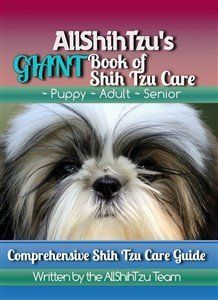
Puppy Color vs Adult Color
When a Shih Tzu has Black-tipped Hairs that Fade Away
Color Changes
If you're bringing home a Shih Tzu puppy, it's fascinating to know that their adorable coloring might change as they grow. Don't be too surprised if the distinct colors and patterns you fell in love with at first evolve over time.
For instance, those charming white patches your puppy sports may expand, covering more of their coat than before. Similarly, the striking brindling that gives them a unique appearance can gradually fade away, creating a more uniform color. Even the deep, rich liver tones that are so eye-catching in Shih Tzu puppies can soften to a lighter liver shade as they mature.
This color transformation is a natural part of a Shih Tzu's development, adding an element of surprise and delight as your puppy grows into their adult coat.
Read more about Shih Tzu Color Changes and see some lovely photos.
Shih Tzu Supplies - An organized list of supplies every pet parent should have for their Shih Tzu; this list connects to more detailed articles with tips, advice and specific recommendations. See what your Shih Tzu is missing for optimal health and happiness.
Are You an AllShihTzu Member?
Take a quick moment to become an AllShihTzu member. You'll receive a PDF Welcome Booklet and our friendly newsletters. You'll also be able to suggest a topic for us to write about. It's the best way for us to stay in touch, so we hope you'll join us today!
